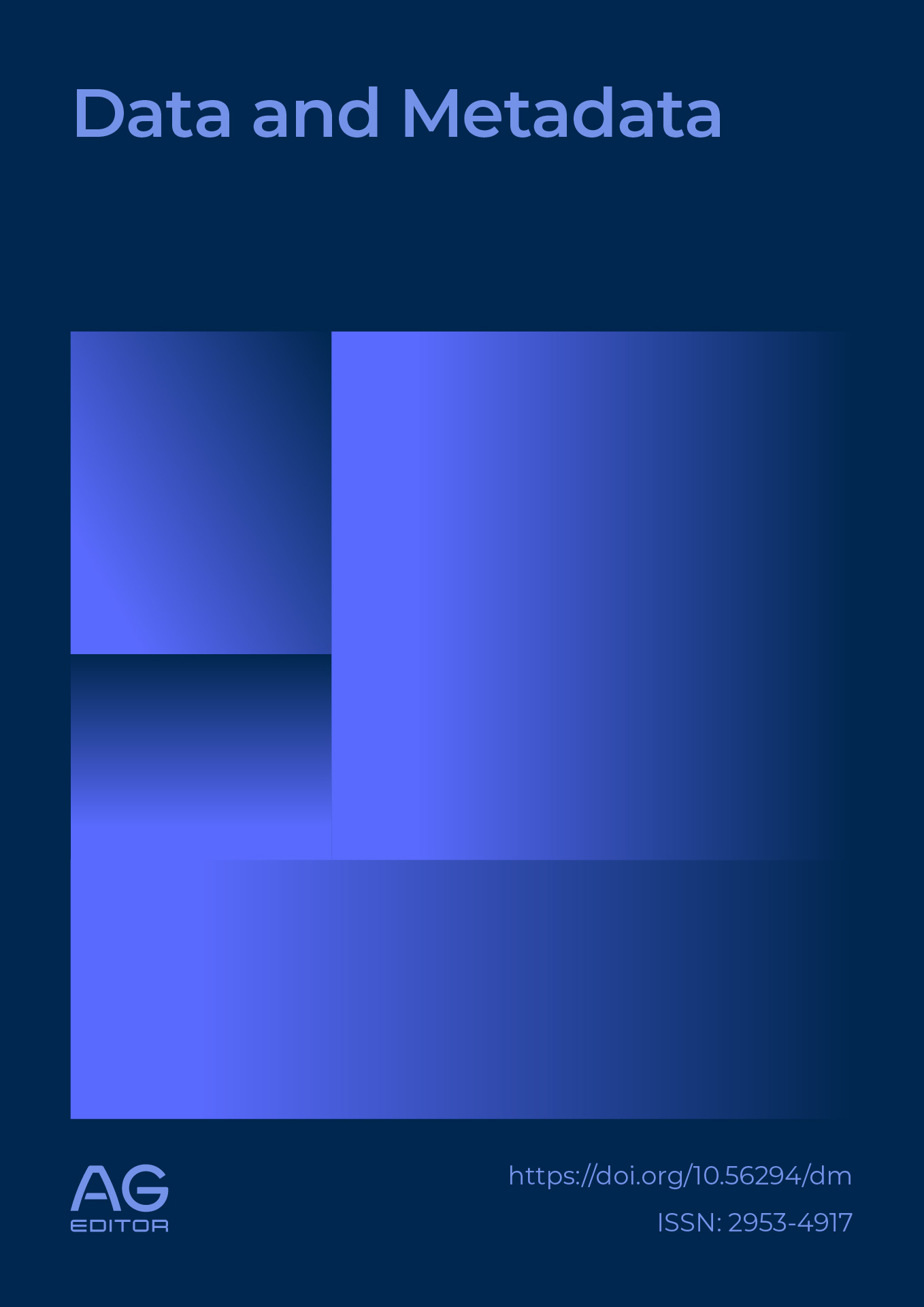The Concentration of AI Talent as an Industrial Strategy: A Cross-Country Panel Data Analysis Applied to Financial Services as an Industry
DOI:
https://doi.org/10.56294/dm20251144Keywords:
AI talent, industrial strategy, financial services, panel data, geoeconomicsAbstract
Artificial intelligence is redrawing comparative advantages in financial services, while many studies remain descriptive or focused on a single country, without testing whether the observed gaps reflect distinct industrial strategies. In this context, our objective is to establish whether the concentration of AI talent in finance is due to a simple global trend or to differentiated national choices. Empirically, we conduct an observational, comparative, and longitudinal study on 10 OECD countries monitored annually between 2016 and 2025 (N = 100 country-years). The dependent variable is the share of professionals trained in AI in finance (AI_pct, harmonized definition). The dynamics is captured by a linear time trend, supplemented for robustness by annual dummies; heterogeneity is modeled via a random effects GLS with country intercepts, clustered standard errors, and the Hausman test does not reject the RE option. On the data side, we mobilize a single, harmonized public source (OECD.AI) and anchor the analysis in 18 scientific references. The results indicate an average increase of approximately +0.2263 percentage points per year (significant), an overall average of 2.86%, and persistent gaps between countries (e.g., Israel ≈ 4.08% vs. the United States ≈ 2.27%), stable when the trend is replaced by time fixed effects. In sum, the rise in AI skills is general, but is part of national trajectories consistent with industrial strategy; hence implications for upskilling, data and model governance, and state-market coordination, subject to a limited scope and the absence of causal identification.
References
Frank MR, Wang D, Cebrian M, Rahwan I. The evolution of citation graphs in artificial intelligence research. Nat Mach Intell. 2019;1:79–85.
Xu T, Baghaei S. Reshaping the future of sports with artificial intelligence: Challenges and opportunities in performance enhancement, fan engagement, and strategic decision-making. Eng Appl Artif Intell. 2025;142:109912.
Sahu, S. K., Mokhade, A., & Bokde, N. D. (2023). An Overview of Machine Learning, Deep Learning, and Reinforcement Learning-Based Techniques in Quantitative Finance: Recent Progress and Challenges. Applied Sciences, 13(3), 1956. https://doi.org/10.3390/app13031956
Hood, R. (2025). The AI workforce: What LinkedIn data reveals about “AI talent” trends in OECD.AI’s live data. OECD.AI. https://oecd.ai/en/wonk/ai-workforce-what-linkedin-data-reveals-about-ai-talent-trends-in-oecd-ai-live-data
Rodrik D. Industrial policy for the twenty-first century. Harvard Univ John F Kennedy Sch Gov. 2004.
Alenizi, A., Mishra, S., & Baihan, A. (2024). Enhancing secure financial transactions through the synergy of blockchain and artificial intelligence. Ain Shams Engineering Journal, 15(6), 102733. https://doi.org/10.1016/j.asej.2024.102733
Secinaro S, Lanzalonga F, Oppioli M, de Nuccio E. The effects of disruptive technologies on accountability in fintech industry: Using bibliometric analysis to develop a research agenda. Res Int Bus Finance. 2025;102816.
Mer A, Virdi AS. The influence of artificial intelligence on personal and corporate finance: A comprehensive literature review with prospects for future research. In: Financial Landscape Transformation: Technological Disruptions. 2025. p. 253–68.
Dote-Pardo JS, Cordero-Díaz MC, Espinosa Jaramillo MT, Parra-Domínguez J. Leveraging artificial intelligence for enhanced decision-making in finance: trends and future directions. J Account Lit. 2025.
Schmallenbach, L., Bärnighausen, T. W., & Lerchenmueller, M. J. (2024). The global geography of artificial intelligence in life science research. Nature Communications, 15, 7527. https://doi.org/10.1038/s41467-024-51714-x
Gstrein, O. J., Haleem, N., & Zwitter, A. (2024). General-purpose AI regulation and the European Union AI Act. Internet Policy Review, 13(3). https://doi.org/10.14763/2024.3.1790
Al mada, M. (2025). The AI Act between the rock of product safety and the hard place of fundamental rights. Common Market Law Review, 62(1).
Cao TM, Nguyen LTV. Factors affecting artificial intelligence (AI) adoption in the talent acquisition process: the case of Vietnam’s medium-sized firms. J Asia Bus Stud. 2025;19(3):748–68.
Green, A., & Lamby, L. (2025). The characteristics of the artificial intelligence workforce across OECD countries. The Indian Journal of Labour Economics, 68, 541–568. https://doi.org/10.1007/s41027-024-00549-7
Shi, L. (2025). Global perspectives on AI competence development: Analyzing national AI strategies in education and workforce policies. Human Resource Development Review. Advance online publication. https://doi.org/10.1177/15344843251332360
Feldman D, Barel O. Artificial Intelligence as a Pathway to Normalization Between Israel and Saudi Arabia: Post-Gaza War Prospects. Middle East Q. 2025;32(3):1–21.
Montag C, Becker B, Li BJ. On trust in humans and trust in artificial intelligence: A study with samples from Singapore and Germany extending recent research. Comput Hum Behav Artif Humans. 2024;2(2):100070.
Rashid A, Rasheed R, Ngah AH, Amirah NA. Unleashing the power of cloud adoption and artificial intelligence in optimizing resilience and sustainable manufacturing supply chain in the USA. J Manuf Technol Manag. 2024. (ahead-of-print)
Ofem UJ, Chukwujama G. Sustainable artificial intelligence-driven classroom assessment in higher institutions: Lessons from Estonia, China, the USA, and Australia for Nigeria. Eur J Interact Multimed Educ. 2024;5(2):e02403.
Khanal, S., Zhang, H., & Taeihagh, A. (2024). Development of new generation of artificial intelligence in China: When Beijing’s global ambitions meet local realities. Journal of Contemporary China. Advance online publication. https://doi.org/10.1080/10670564.2024.2333492
Scantamburlo T, Cortés A, Foffano F, Barrué C, Distefano V, Pham L, Fabris A. Artificial intelligence across Europe: A study on awareness, attitude and trust. IEEE Trans Artif Intell. 2024.
Kalinin, A. M., & Kuzyk, M. G. (2024). Import dependence and import substitution in Russia. Studies on Russian Economic Development, 35(2). https://doi.org/10.1134/S1075700724020072
Baltagi BH. Econometric Analysis of Panel Data. 3rd ed. Chichester: John Wiley & Sons; 2005.
Downloads
Published
Issue
Section
License
Copyright (c) 2025 Fatima-Zahrae LAKHLIFI, Mohammed ABDELLAOUI (Author)

This work is licensed under a Creative Commons Attribution 4.0 International License.
The article is distributed under the Creative Commons Attribution 4.0 License. Unless otherwise stated, associated published material is distributed under the same licence.



